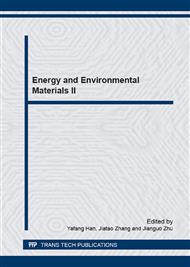p.76
p.81
p.86
p.91
p.96
p.101
p.107
p.113
p.118
Size Dependence of Evaporation Temperature by Bond Number Calculation
Abstract:
In this study, a model based on bond number calculation in a system was developed to predict size-dependent evaporation temperature of nanoparticles. This model, free of any adjustable parameters, can be utilized to predict the thermal stability for low dimensional materials. If the atomic structure of a nanoparticle is known, the size and shape-dependent bond number can be obtained. The cubooctahedral structure was taken as the shape of nanoparticles for simplicity. According to the established model, the evaporation temperature of nanoparticles is dependent not only on their size, but also on their atomic diameter. The results indicated that the evaporation temperature decreased with the decreasing size of free-standing nanoparticle. The theoretical predictions are consistent with the evidences of the experiments or molecular dynamic simulations for Au and Ag nanoparticles.
Info:
Periodical:
Pages:
96-100
Citation:
Online since:
March 2015
Authors:
Keywords:
Price:
Сopyright:
© 2015 Trans Tech Publications Ltd. All Rights Reserved
Share:
Citation:


